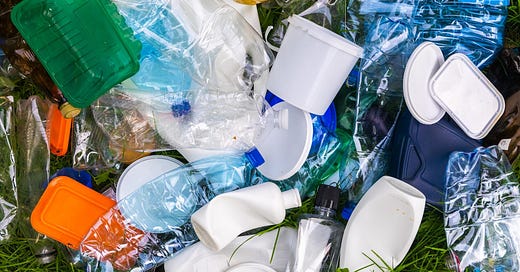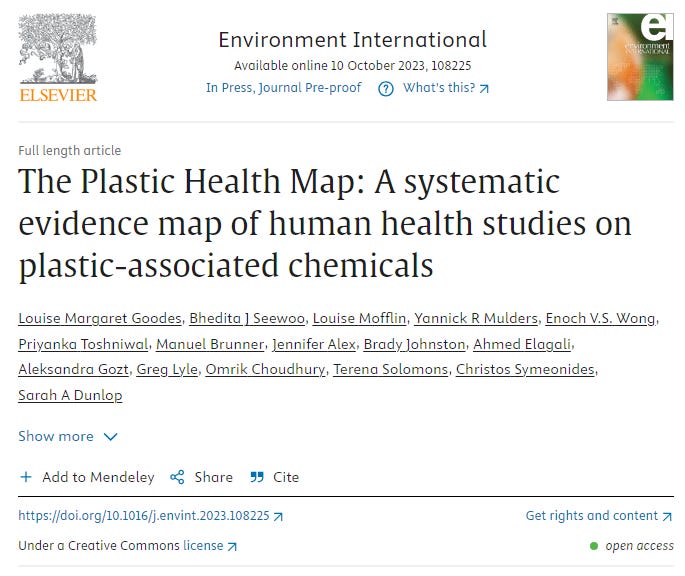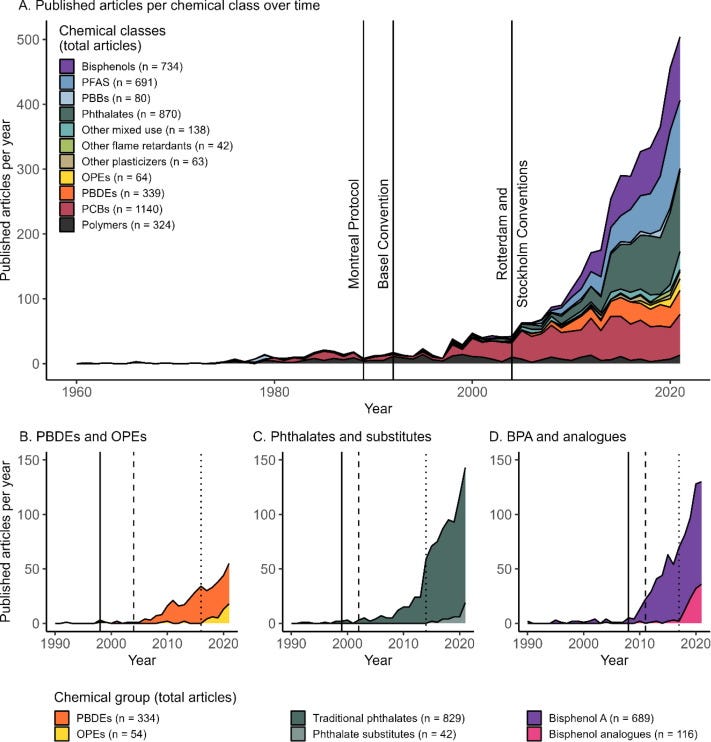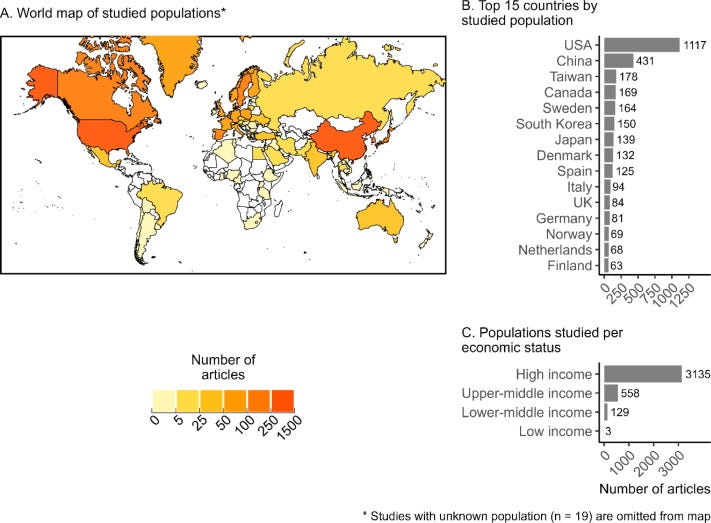The Plastic Heat Map
An incredible new resource to understand the harmful effects plastics are having on our bodies
A comprehensive new open-access database reveals just how much we already understand about the damaging effects of plastic chemicals on human health — and just how much we don’t know.
Since the 1960s at least, there have been thousands of studies of the effects of plastics and plastic chemicals on human health. Identifying, let alone accessing, all of these studies is a monumental task in itself, and that’s before we even get down to the vital business of trying to draw together all the different findings in a comprehensible way that allows us to do something about the plastic problem.
Thankfully, the good people at the Minderoo Foundation have created an open-access database called the Plastic Heat Map that contains the findings of 3,500 studies on plastic chemicals published between 1961 and 2002. My hope for the project is that it will finally allow people to build a comprehensive and indisputable case that many, if not most, of the chemicals involved in the manufacture of plastics are harmful to us, and that this, in turn, will help us to raise awareness, get many of these chemicals banned or more tightly regulated and clean up the environment.
The researchers behind the project began by identifying a significant subset of chemicals involved in the manufacture of plastics. Experts believe there may be as many as 10,500 or more chemicals involved in the manufacture of plastics today. The researchers took around 1500 of these chemicals and collected all the papers they could on them. The chemicals chosen include bisphenols, PFAS, flame retardants and phthalates.
You can use the database to build complex “maps” of chemicals, cross-referencing and plotting chemicals by type, health outcomes and geography, as well as adding in other variables like year of publication, population and the age of research subjects.
Another valuable contribution of the creation of this database is to highlight the extent of our ignorance about plastics. As I said earlier, there are maybe 10,500 chemicals involved in the manufacture of plastics today. The researchers discovered that, of the sample of 1500 they chose to investigate, just 30% have been investigated for health impacts. As the researchers say in an accompanying journal article for the project (link at the bottom),
Globally, regulation of chemicals generally assumes safety until proven otherwise. As a result, scientists and regulators have not yet determined the health impacts of the thousands of plastic-associated chemicals currently in use. The current ad hoc risk assessment approach is not sufficient to protect human health, and there is a pressing need for a paradigm shift whereby new plastic-associated chemicals are rigorously tested for safety before being introduced in consumer products, with ongoing monitoring of human exposure levels and health impacts post-introduction.
I’ve written at length about how reckless this attitude of “safe until proven otherwise” is. We need a new way of introducing and regulating novel substances, whether they be industrial chemicals or food ingredients, that has human health and flourishing, and not the profit motive, at its core.
What’s more, there are few studies of the health impacts of “safe” replacement chemicals that have been created as alternatives to substances like BPA and phthalates. The few that have been investigated have turned out to be as bad as the original substances they were intended to replace, or worse. For example, ATBC, which is used as an alternative to phthalates has been shown to affect the ability of nerve cells to form and repair themselves. Exposure during pregnancy and infancy could, conceivably, cause brain damage.
We also lack proper studies that examine the effects of human exposure to macro- and micro-plastics, despite a wealth of animal studies. There are clear geographical and age gaps in the literature too: most studies focus on wealthy rather than poor countries, and on younger people rather than the elderly.
Interestingly, too, we know lots about the effects of maternal exposure to plastic chemicals on children, and a little about the combined effect of maternal and paternal exposure, but there isn’t a single study of the effect of paternal exposure; for example, there are no studies linking a father’s plastic exposure to the quality of the genetic material he provides to his children and its effects on their development.
All of these gaps in our knowledge will, of course, need to be filled, and as a matter of urgency. However, what’s now beyond doubt, thanks to the Minderoo Foundation, is that threat of plastics to human health cannot be ignored.
You can read about how the project was conducted, as well as its significant findings, in a free article published in the journal Environment International.
The Art of Liberty Foundation will be co-sponsoring a conference in Sedona, Arizona on November 3rd, 4th and 5th entitled: Liberty on the Rocks!
The conference brings together some of the leading lights in Liberty to discuss our current political situation and SOLUTIONS, including how to create local Liberty groups and Freedom Cells and how to move yourself out of organized crime’s crooked admiralty law system by correcting your status and standing. Friday night, there will be a VIP Dinner and concert Featuring Grant Prezence. Saturday we are at the Global Center for Christ Consciousness in Sedona for talks, workshops and a panel. There will be a Liberty expo with the ability to table. It is free for all on Saturday after 3:00 PM. Sunday we are taking folks for yoga and hiking in the most beautiful place on the planet. Get the details at










Anything plastics can do hemp can do better. Hemp can do anything better than crude.